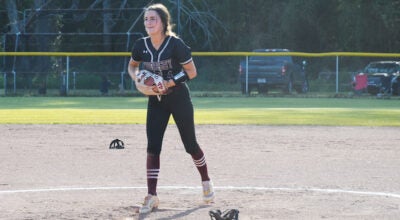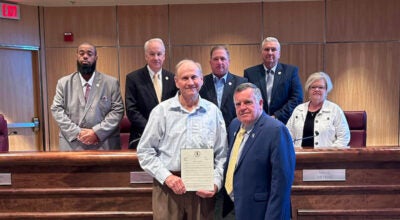Chilton area Peach Production meeting to be held Jan. 25
Published 1:20 pm Wednesday, January 20, 2016
The 2016 Chilton area Peach Production meeting will be held on Jan. 25 at the Alabama Power Company Building.
Guest speakers and growers will discuss the current low-chilling situation, strategies for crop management in a low chill year, materials for chill replacement, ag weather and climate data resources, peach tree replant issues, new strategies for preventing Armillaria root rot, as well as Chilton Research and Extension Center fruit research updates, Alabama Fruit and Vegetable Growers Conference and more.
The meeting is free and open to the public and will be held from 4 p.m. until 8:30 p.m. with dinner served.
The warmest fall in recent history has fruit growers and researchers paying close attention to weather forecasts in early 2016. Many fruit crops require a specific amount of dormancy or “rest” that occurs with the cold temperatures of winter, allowing them to bloom, fruit and grow normally when temperatures rise in the spring. Fruits grown in Alabama vary greatly in their chilling requirements. Fruits with high chill requirements including some cultivars of peaches, nectarines, plums, apples and cherries may have delayed blooming and reduced fruit size and yield if chilling is inadequate.
For this reason, researchers and growers monitor winter chilling to better understand and predict crop performance and management needs of various crops. Temperatures between 32 and 55 degrees are considered ideal chilling. For many years, all hours below 45 degrees between Oct. 1 and Feb. 15 have been recorded as a standard method of logging “chill hour” accumulation for each given year, while providing valuable data for comparison between crop years.
On Jan. 1, there were only 253 hours below 45 degrees logged at the Chilton Research and Extension Center in Thorsby, marking the lowest Jan. 1 winter chilling accumulation on record since the Chilton Area Horticulture Substation staff began logging chill hours in the fall of 1956, some 57 years ago.
Thankfully, since the first week in January colder temperatures are bringing a much needed increase in chill hour accumulation. Even so, this winter is currently the third warmest on record in the past 57 years.
The 253 hours logged by Jan. 1, compares to the 57-year average of 586 hours, or 481 hours averaged by Jan. 1 during the past 10 years. The next lowest Jan. 1 chilling accumulation recorded occurred in 2007, which resulted in the fourth warmest winter on the 57-year record with 846 total chill hours by Feb. 15.
In the past 57-years, the four warmest years on record, logging under 360 hours by Jan. 1, averaged a total winter chilling accumulation of 730 hours by Feb. 15, compared to the 57-year average of 1,190 hours, and the past 10-year average of 1,012 hours logged under 45 degrees by Feb. 15.
Current research related to breaking dormancy and materials labeled to provide some chilling replacement in fruit crops will be discussed at the Chilton Area Peach Production Meeting in Clanton on Jan. 25. To register for the meeting call the Chilton County Extension Office at (205) 280-6268.
Chill hour accumulations for the Southeast can be viewed online at http://agroclimate.org/tools/chill-monitoring, as well as a wide variety of crop weather related forecasts and tools helpful to growers and the agriculture industry.
For reservations to the meeting, call the Chilton County Extension Office at (205) 280-6268 by Jan. 22.






